Saloma Miller Furlong on Bonnet Strings (Giveaway)
Bonnet Strings: An Amish Woman’s Ties to Two Worlds is the new memoir by Saloma Miller Furlong. You might know Saloma from her blog, previous book Why I Left the Amish, or more recently, from the PBS film The Amish: Shunned.
In today’s interview, Saloma discusses topics including Bonnet Strings, her former community, and The Amish: Shunned.
Bonnet Strings 2-Book Giveaway
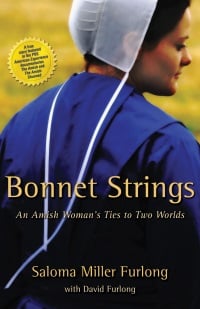 Saloma and Herald Press are giving away two copies of Bonnet Strings for Amish America readers. To enter, leave a comment or question on this post.
Saloma and Herald Press are giving away two copies of Bonnet Strings for Amish America readers. To enter, leave a comment or question on this post.
For an extra entry, share using social media like Facebook, Pinterest, Twitter, etc. Let me know you did with an email to amishamerica@ gmail.com. We’ll draw winners next Monday, March 24, and post them here (Just FYI: lately we’ve been posting book winners on the original giveaway post with a small update at the top, not in a separate post).
Q&A with Saloma Miller Furlong
Amish America: For readers who aren’t familiar with your back story and your first book, can you share a little about that?
Saloma Miller Furlong: Yes. Why I Left the Amish begins with an unanticipated break in my studies during my first semester at Smith College in 2004 when my father died and I traveled back to Ohio to my childhood community for his funeral. Finding myself back in the horse and buggy world I had left twenty-four years before, and then suddenly back on Smith College campus in a matter of forty-eight hours left me reflecting on the two separate and distinct lives I have lived.
I use the narrative present to tell the story of my childhood and young adulthood in my Amish community in northeastern Ohio. Mine was not the idyllic childhood that many people think of when they think “Amish.” I had a father with mental illness, a brutal older brother, and a mother who did not always protect me.
In addition to the adversities I faced in my childhood, I also found that my inquisitive nature was a mismatch with the culture that I was taught I could never leave. I questioned the Amish ways, even after I joined the church and was baptized.
The last part of Why I Left the Amish chronicles my journey out of the only community I had known, to a place where I knew no one.
How does this book fit with your first?
Saloma: Bonnet Strings: An Amish Woman’s Ties to Two Worlds continues the story I started in Why I Left the Amish. When I landed at the YWCA in Burlington, Vermont, I reveled in my newfound freedom, established a social life, and began dating. I met a Yankee toymaker and peddler, David, who was eager to learn everything he could about the Amish, and he was willing to help me sort out the complexities of my new world.
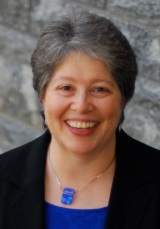
Then one Friday night, my freedom came to an abrupt end when a vanload of Amish people showed up at my front door to bring me back into the fold. I could not resist the overwhelming presence of the bishop and others, and so I returned to Ohio with them. Thus began a long struggle of feeling torn between two worlds: should I remain Amish and embrace the sense of belonging and community my Amish life offered, or should I return to the freedom I had experienced in Vermont?
Upon my return, I settled into teaching in an Amish school and did my best to fit back into Amish ways, but a legacy of childhood abuse and questions of identity plagued me. My ties to the outside world remained, especially through the quiet perseverance of the toymaker from Vermont. I kept telling him that a romance is impossible because “I’m Amish and you’re not.” Yet he kept sending me cards, never giving up hope that our love could survive the strain of living in two different worlds.
We’ve looked before at what the term “Amish” means. You describe it as not just a religion and way of life, but a way of thinking and being. What do you mean by that?
Saloma: There is a passage in the book that makes an attempt at describing what I mean by a way of thinking and being. I was contemplating the question a Vermont friend had asked about which world I was happier in.
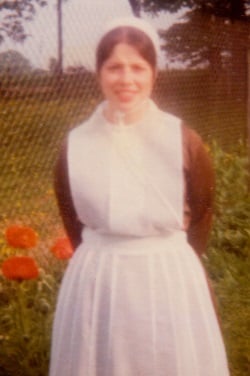
If I looked at it purely from my own point of view, then the answer was clear: I was certainly happier in my Vermont world. My freedom was about me as an individual. But Amish people carried a sense of duty or obligation for the community as a whole that other people didn’t understand. To be born and raised and then baptized into the community was a covenant not to be taken lightly. Being back in my Amish world was about community and something greater than myself, and it didn’t have to do with my personal happiness.
In essence the way I would describe the Amish way of thinking and being is in this paragraph… it is about what is good for the community, while in the mainstream culture we think much more about what is good for the individual.
Can people who are no longer in an Amish church still be Amish?
Saloma: According to Amish teachings, the answer is no. We were taught that you are either Amish or not… there simply is no in between. I used to fight against this notion, thinking that I have the best of both worlds — I have a lot of Amishness in me, and yet I don’t have to be restricted by their Ordnung. But I have actually come around to agreeing with the Amish teachings. Those of us who leave have to suffer the loss of our people and community. Being Amish separate from the community is pretty much impossible.
And yet part of me will always be Amish. I imagine it is much like being an ethnic Jew, though not a practicing one.
What has the reception been like for Bonnet Strings?
Saloma: I would never have guessed how positively people are reacting to this second book. I’ve gotten many comments through social media and emails. People relate to my book in ways that I could never have imagined. Even close friends who were strangely quiet about my first book are raving about the second one. I’ve been told that I’ve progressed in my writing style between the two books. I have to give a lot of the credit for that to Valerie Weaver-Zercher, who helped me shape Bonnet Strings into what it is.
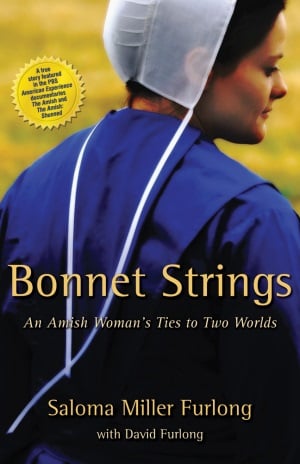 Perhaps the most gratifying response comes from my sister, Sarah. She was hurt by some of the things I wrote in my first book, to the point that it took her two years to come around to wanting to talk to me again.
Perhaps the most gratifying response comes from my sister, Sarah. She was hurt by some of the things I wrote in my first book, to the point that it took her two years to come around to wanting to talk to me again.
Two nights ago, she and I had an hours-long conversation that touched on philosophy, family relations, and other topics. She raved about Bonnet Strings, and says she could not put it down. Because I did not actually expect that anyone in my family would approve of the book, this came as a pleasant surprise.
As you note in your introduction, there is a lot of diversity across the over 460 Amish settlements today. What are some things people might find interesting about the Amish of Geauga County?
Saloma: Many people do not know that the Geauga County community is the fourth largest Amish community. They are of the lesser known Amish, partly by choice. When I was growing up, they often used the Lancaster community as an example of what they did not want in terms of tourism. They felt that the Amish in Lancaster had “sold out” their religion and way of life.
When I left the Amish in 1980, Geauga County had a little over 30 church districts, and now there are more than 100 church districts in that community. And counting.
The Amish in Geauga County are Old Order. On the spectrum of liberal versus conservative Old Order Amish, the Geauga County Amish are somewhere in the middle.
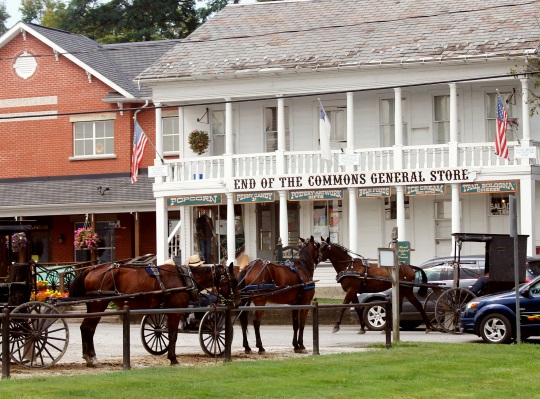
What was the experience of participating in The Amish: Shunned like?
Saloma: To quote Levi Shetler, “It was pretty awesome, actually.”
I already had a working relationship with Callie Wiser from the first film The Amish, so this seemed like a pretty natural progression. Callie has a way of bringing out the essence of people’s stories and portraying them in meaningful ways. She did a really good job capturing the poignancy of each of the people’s stories she told. I am honored to have been a part of both films.
In the film your story is intertwined with that of Anna, who comes to live with you after leaving her community. How would you describe the role you played for her? Why do you think Anna eventually returned to her community?
Saloma: My husband, David, and I gave Anna a place to live, and helped her start a bakery and basket-weaving business out of our home. We basically became her surrogate parents.
With a close viewing of the film, a person can see the signs that Anna was having a hard time making the transition into the mainstream culture. She came from the strictest of the strict — in fact the strictest of the Swartzentruber divisions. There were very few choices she could make for herself, because so such was determined by her church Ordnung. The cultural divide was just too wide for her to traverse. Also, the homesickness she was experiencing was pretty intense. Anna was the favorite aunt of her forty nieces and nephews and she missed her family. She could not sacrifice her community to have personal freedom.
What has been the hardest of all is that Anna is not allowed to write to us. Having lost all contact is heart-wrenching.
—
Update: I attended Saloma’s talk in Asheboro, NC last night (March 27). She had quite a nice crowd, I’m guessing 80-100 people? Below, a couple of shots from my tablet camera of Saloma and David during the talk and afterwards. They got a lot of questions as you might expect. A very nice evening and audience.


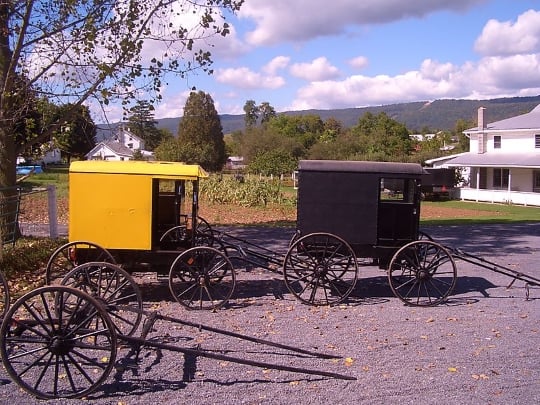

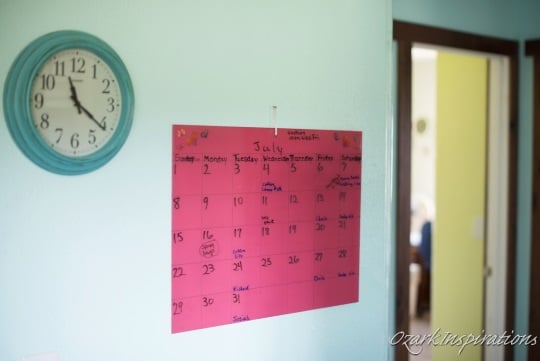
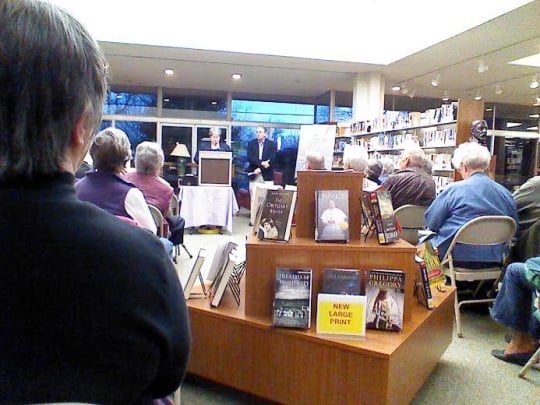
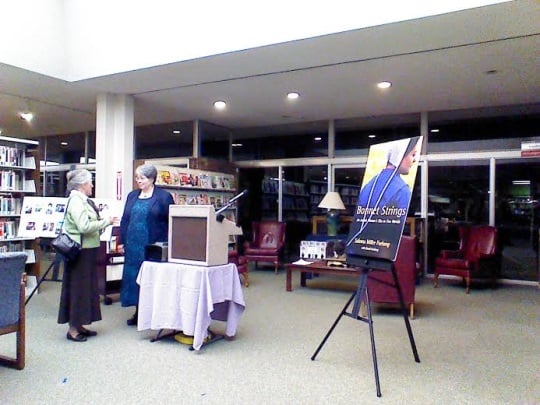
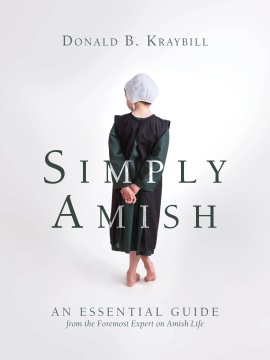
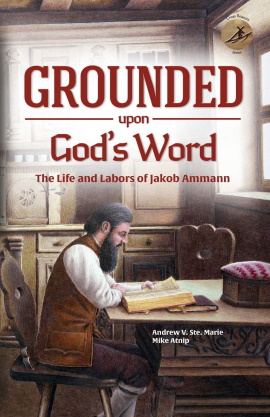
Leanna, I’m glad you found my first book thought-provoking… I suppose that could be in a good way or challenging way, but I’m hoping it was good. Good luck with the giveaway, and I hope you get a chance to read the book.
One thing I should have mentioned earlier, anyone can ask for my books at your local library, and they will likely get it for you, even if they need to buy it.
Wish you all the best,
Saloma
Bonnet Strings
My family find the Amish so very interesting! Just finished reading The Choice which we both read & enjoyed it! Hopefully we can read another Amish book soon! Thank you for reading this entry!
Hi Sherri,
Thank you for your interest in my book. I hope you get a chance to read it.
Cheers!
Saloma
Very informative! Thank you!
You’re welcome, Claire. This has been my pleasure!
Bonnet Strings
Looking forward to reading your books.
Celeste, I wish you happy reading!
Cheers,
Saloma
I enjoyed reading your first book Saloma.. Not that I enjoyed the hard times you went thru in your young life, but you have a great knack for writing and it was hard to put it down when I had to.
Im looking forward to reading this book as well..
Thank you for inviting us into your private life & sharing a part of life that many people dont want to share about their own lives.
I think there are more incidences of familial abuses in all of our homes than we wish to believe.. We need to stand up, stand together & see to it that it doesnt happen in our own lives and that of our families any longer. We need to care & step in when its warranted.
Wishing you the Best & Highest in Spirit.. Always!
KimH
Hello Kim,
Thank you for your comments. I’m glad you found meaning in my first book. I think you’ll find the second book a pleasure… it’s about that time in my young life when I was discovering I had the power to change my situation… it’s a book about empowerment.
About abuse… I agree that there is more of it happening than we are willing to believe. I think for many people, their minds cannot go there. But all children need advocates, most especially when they are being abused. I love the idea of everyone being willing to become an advocate, should that happen in their families. Breaking the silence that shrouds abuse is usually half the battle.
Many blessings of peace and joy to you.
Saloma
Review
I have Amish friends and their Ordnung is progressive.They have solar panels, cell phones, and self propelled farm equipmemt. I enjoy your writings.
Hello William,
Your Amish friends live in a more progressive area. I’m guessing Holmes County or Indiana?
Glad to know you like my writing. Thank you for letting me know. And thank you for reading!
Cheers,
Saloma
Bonnet Strings
I loved your other book you wrote and enjoyed reading about your life. I would love to have this other book of yours. I hope I am picked to get a copy.
I have Amish friends and Mennonite friends across the country.
Hello LeeAnn,
Thank you for letting me know that you liked my book. Good luck in the drawing.
Take care,
Saloma
Would love a chance to win this book. My library does not have the funds to purchase a lot of books so I know this would not make it to the shelves. I have asked for a lot of Amish type books and have not had any luck getting them because they are not available. I used to travel to many libraries (some 2 hrs away) to get books that I could not request online but could in person. Wish I could still do that and maybe find a library with your books, but I have stopped traveling when the price of gas went up years ago. Also, I wish you could have a book signing around the Albany or Saratoga NY area during the afternoon and I would stop by. Thank you for the chance to win a copy.
Hello Karen,
I hope you get a chance to read my books, one way or another. I don’t have any plans to do a talk in your area, but if you can suggest someone, please let me know.
All best,
Saloma
I felt very humbled as I watched your segment in The Amish: Shunned in which you and your husband sheltered Anna. Even if she can’t personally write to thank you because of her return to her very strict community, I can thank you for her, for the gentle and motherly care you showed her.
I am delighted that you have written this new book and look forward to reading it! And I’m glad to hear that it has helped bring you and your sister closer together.
Hello Gail,
I am so touched by what you have written here. I often wonder how Anna feels about her time out and living with us. I so wish she and I could have a long conversation together.
Thank you also for the thoughts about my sister and my relationship. I appreciate you kind and sympathetic words.
Many blessings along the roads you travel.
Saloma
Admiration
I admire Saloma’s strength and character. Her story is so inspiring.
Karen, thank you for your kind words. Blessings to you!
Saloma
Finished Bonnet Strings in record time. I loved it when as I read, I become an invisible witness in every scene and lived in the scene right there alongside of you, Saloma. Reading takes on life when that happens for me. Thanks for bringing me along as you traversed your days and experiences.
Blessings,
Mary
I made it out to Saloma’s talk in Asheboro, NC last night. It was a nice event, have posted a couple of photos in an update above.
Hi Erik,
I envy you the opportunity to hear Saloma and David talk about their book and their life experiences together. Ironically I finished reading Bonnet Strings yesterday evening and have had it on my mind since. It’s certainly an interesting and compelling story to read, it doesn’t disappoint and it entertains, it also inspires and shares difficult subjects like mental illness, emotional and physical abuse in families, childhood sexual abuse and incest, religious abuse. Notably Bonnet Strings is a story of remarkable courage, of commitment to live a good and worthwhile life with no guarantee that it might work out that way, and with full knowledge that it would be impossible to ever return to a life that was unfulfilling but at least familiar and predictable. Most beautifully it’s quite a love story, all people should be so fortunate to have what Solama and David have, genuine love and lives lived with purpose. Erik, thanks for featuring this story and others which teach us about each other through the wider world and the smaller world too, like that of the Amish.
Always wishing you the best in all you do,
Gary
Did they introduce you to the crowd, Erik?
Vermont Public Radio has a 14-minute audio interview with Saloma, “How A Conflicted Amish Woman Found Love, Independence In Vermont,” along with a written transcription.
http://digital.vpr.net/post/how-conflicted-amish-woman-found-love-independence-vermont
Thanks Gary, I’m glad I had the opportunity to visit and share this and glad you enjoyed the book. And Linda, no they did not, this was rightfully Saloma and David’s show 🙂 I did talk with a few nice folks afterwards about some Amish topics, and Saloma and I briefly addressed an Amish convert question.
Wow! very informative 🙂
I and my family had been thinking: Since most Amish are bound by lots of rules and tradition, for those that break away or leave the community as you did, do you or those that you know who left the community, are now part of an established religion?
For example: Christian (evangelical) or other or do you (in general) become agnostic (“I believe in God but do not set foot in a church”), etc.
We are interested in knowing because I personally know of ex JWs (Jehovah Witness’) who left the JWs and for a very long time did not want anything to do with “church” or “working out salvation”.
Thank you for your response as I am sure others might have the same question and maybe, even possibly, make another movie or a book about this part of the “faith journey”.
Would be glad to read, hear, see and even watch future updates regarding this important issue 😉